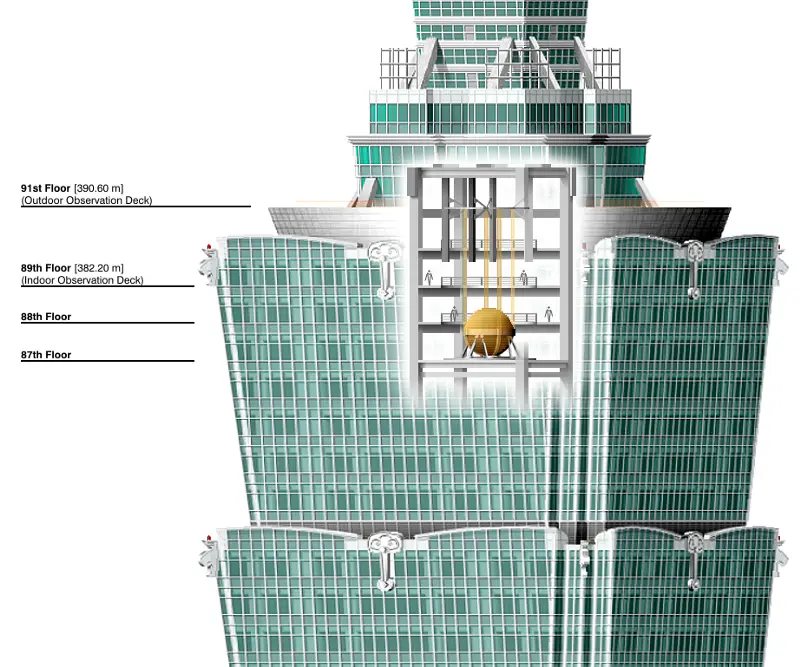Skyscrapers around the world are being built taller than ever before, but as the height increases, the amount the building moves at the top also increases. This can make a gusty day at the top of the building a potentially stomach-churning experience. These skyscrapers can sway many feet under certain conditions from side to side, and anyone inside the upper portions of the building will feel the effects.
To make sure the occupants of these floors are comfortable, developers of some of the world’s tallest buildings install dampeners to counteract this movement. Some of these dampening systems, also known as a tuned mass damper, consist of steel balls or plates that weigh 300 to 800 tons, which are attached to the building by springs or pistons. Some dampening systems even use tons of water as the damper instead of steel. This type of system is known as a slosh tank or slosh damper.
When the building is hit by a strong wind, it begins to sway, and the damper, which can be steel weight or water, move in the opposite direction but by a smaller distance than the building swayed. This helps to reduce the overall distance the skyscraper sways and pulls the building back to its original position. These tuned mass dampers don’t add any structural stability to the skyscraper since it is already designed to sway a certain amount. It simply makes it comfortable for people to be in the upper reaches of the building and not feel unsettled every time a stiff wind blows.
Most tuned mass dampers are hidden from the public somewhere in the upper floors of the building. One exception to this is Taipei 101, the tallest building in the world in 2004 at 101 floors until it was eclipsed by the Burj Khalifa in Dubai in 2009. Taipei 101 uses its damper as a tourist draw and is the only one in the world that can be viewed by the public.

Its damper is a huge sphere that weighs 660 tons and consists of 41 layers of five-inch thick steel plates. The steel ball is positioned between the 87th and 92nd floors and counteracts the effects from wind and earthquakes. It hangs from thick steel cables at the top and is attached to the building by huge hydraulic shock absorbers at the bottom.
Sources: Practical Engineering, NY Times, Taipei 101



